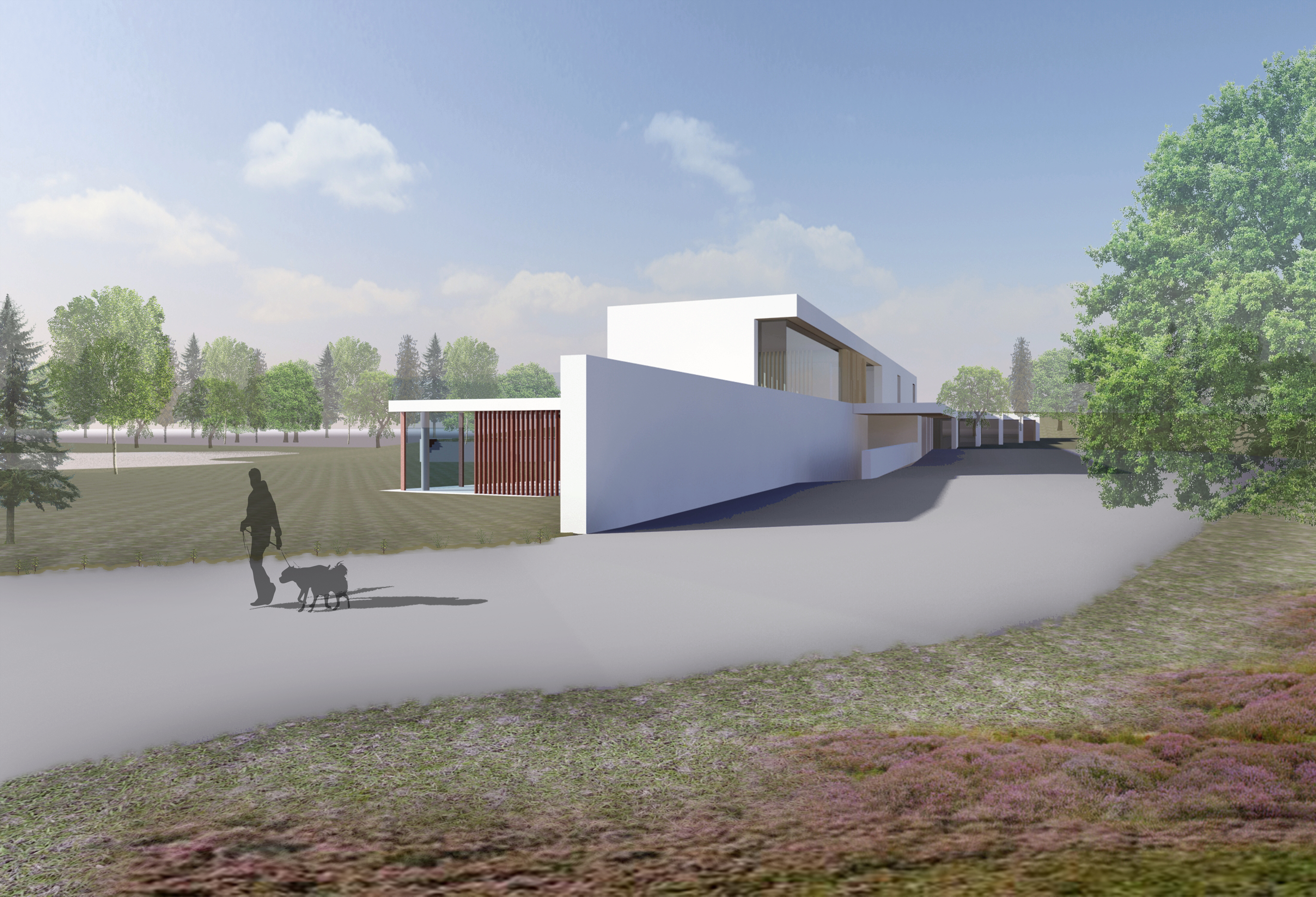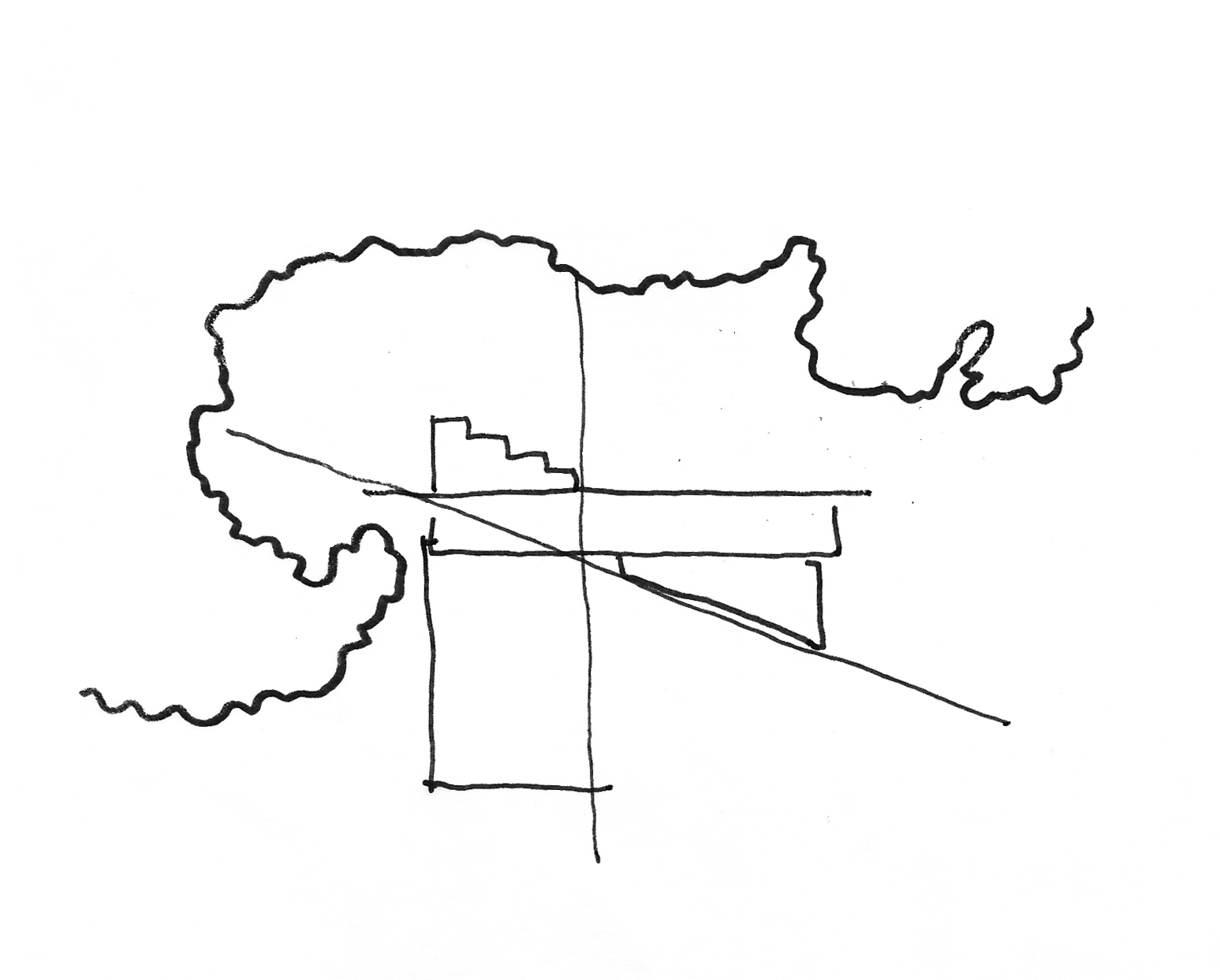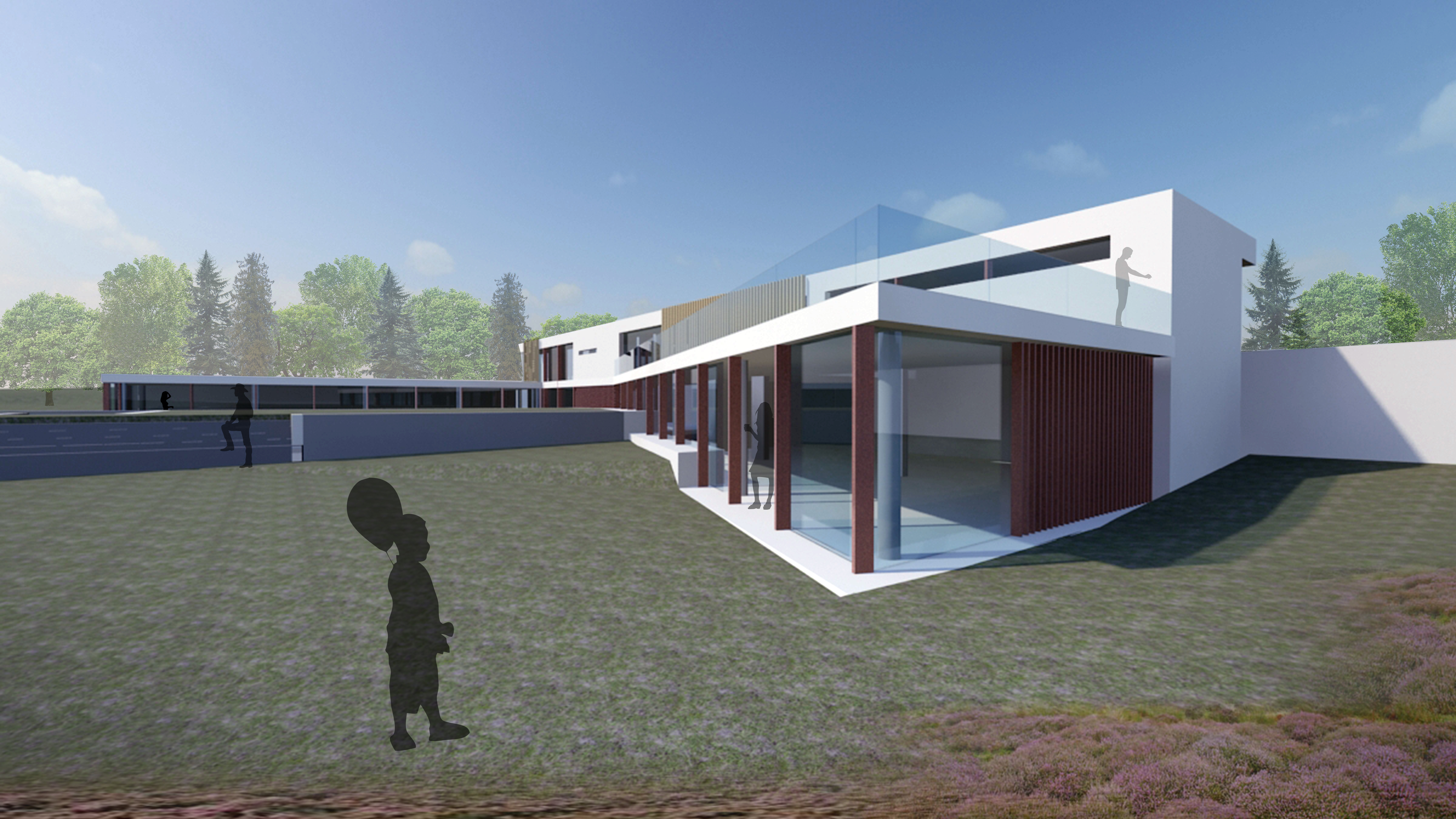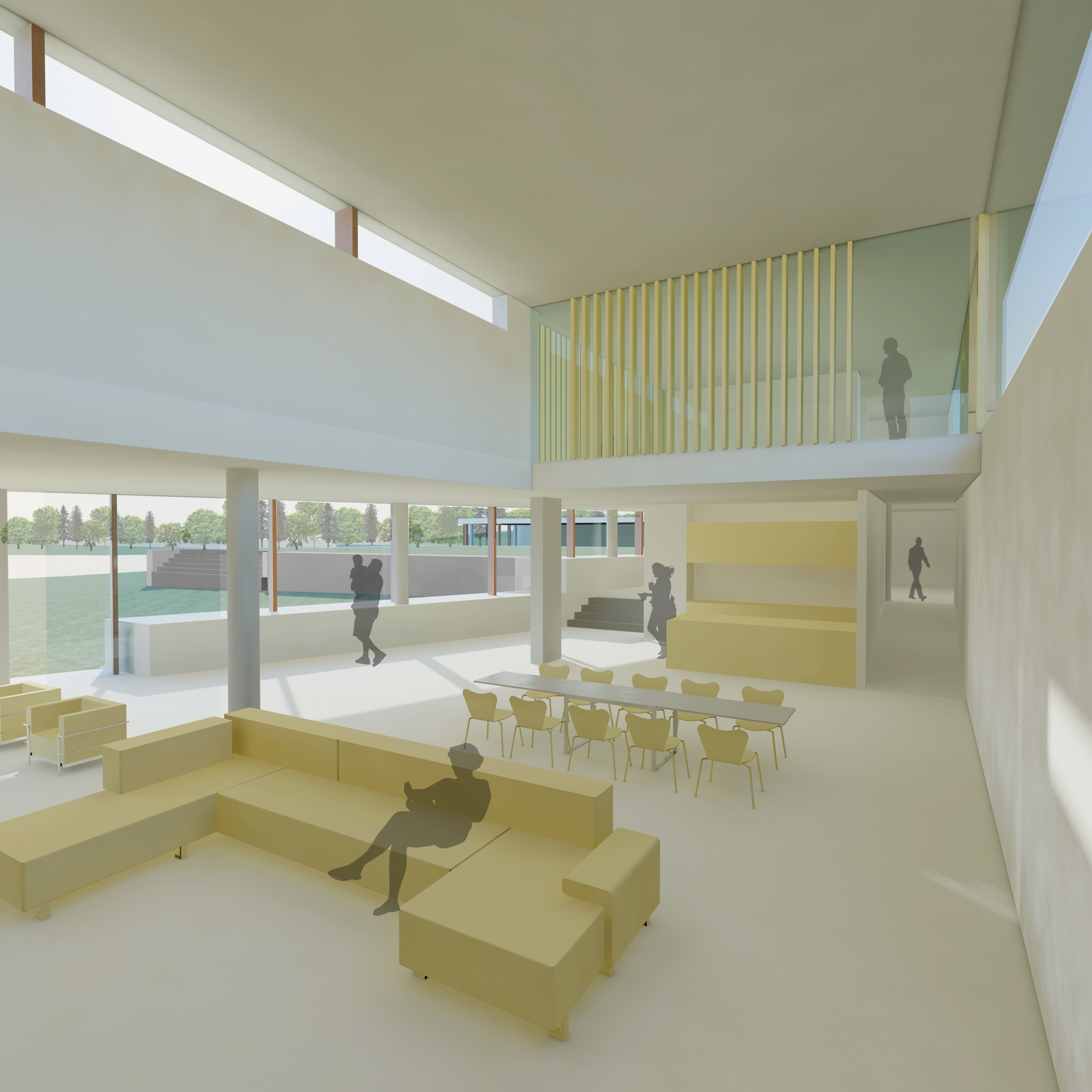The White House Competition

The White House is a private competition entry for a site in the UK. The following text was submitted as part of our successful competition entry:
A beautiful house is one which we can believe sustains beautiful and authentic lives. Whether its form and expression results from the heft of generations or a singular vision for how we might live, a beautiful house lends meaning to the lives of its occupants it encourages and nurtures the myriad facets of dwelling: a shelter for eating and sleeping, growing up, reading, dreaming and playing, watching the passing of the seasons, entertaining friends, plotting careers, coming to terms with loss, reflecting on life.

A beautiful house is one which is in harmony with its setting and derives meaning from it; whether it is a farmhouse, a crofter’s cottage, a suburban family h ouse, or the centre of a country estate, it sustains and takes nourishment both from the immediate land around it and from the world of human practice and ideas of which it is a part. This wider ecology transcends the lives of its occupants and, a such, a beautiful house comes to represent values and endeavour which endure across generations.

The land on which this house is to be built appears to lie somewhere between a country estate and a suburban plot a country estate because it sustains both agriculture and leisure, a suburban plot because, based on the occupations of its owners, we imagine it is intended primarily as a retreat from the city so we understand the house to be a hybrid between a working country residence and a suburban home; we would call this a villa, an architectural type which is embedded in the landscape whilst connected through its mode of expression to the metropolitan world.
The Renaissance villa was conceived as a microcosm of the world with Man at its centre. A contemporary villa no longer has pretensions to being the centre of the cosmos but it is at the heart of a family’s relationship with the world. It is both their nest and cave. They bring to it their spoils from the world. Children grow andlearn there. It is like a third skin, one which provides not just shelter but thefamily’s public face to the world
It is busy with the immediacy of life but also acts as a bulwark against change generations may come and go but the house endures.We have endeavoured to capture the diverse qualities of domestic life: transience and permanence, the public and the intimate, rituals of sharing and competition (play), energy and repose, and to structure the accommodation in the house and its relationship with its immediate surroundings so as heighten their experience.

The site is large enough to be developed in the tradition of the English picturesque and for the landscape to be transformed into an idealisation of nature. However, as a former golf course, the site has the artificial qualities of a suburban setting. Recent landscaping appears to play on both these qualities: the lake simultaneously recalls picturesque landscapes, such as Blenheim, and metropolitan ponds such as the Serpentine while recent tree planting evokes both practical arboreal husbandry and an aim to prettify the lake. We propose that these emerging qualities are built on by developing the open grassed areas to the south and north of the house as moorland and the edges of the lake as a wetland. In this way the house will be embedded in the heart of a domesticated wilderness.
The external spaces around the house provide a series of mediations between the apparent wilderness ofthe surrounding landscape and the controlled nature of the internal environment. The orientation and arrangement of the house works with the landscape so as to provide an appropriate setting for the diverse activities of the domestic environment.








